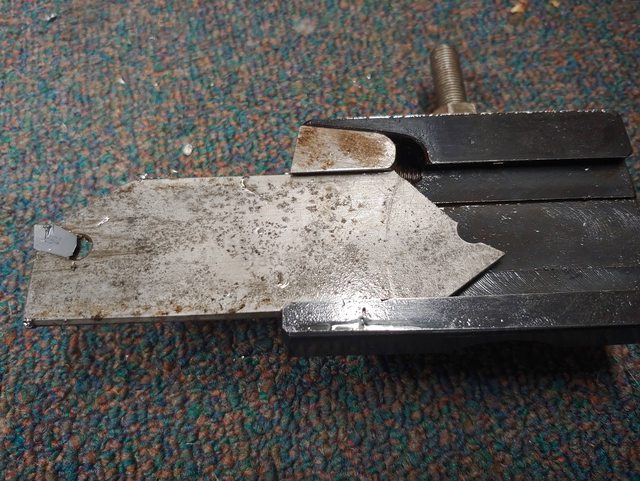- Joined
- Dec 20, 2012
- Messages
- 9,422
The metal removal rate and therefore the load on the tool decreases as the diameter reduces when using a constant rpm and constant feed per rev. If the feed was excessive it would show at the beginning of the cut where the forces are greatest. I suspect the blade was too weak for the operation and a deeper blade and possibly wider would have been more suitable.
Look, given that his spindle speed was constant, the cutting speed at the point of cut was continually reducing as the cut proceeds. As he gets closer to the center, cutting pressure at the tip of the tool increases. Given that he was using auto-feed, that tool tip is being fed under increasing pressure but it is not cutting because the cutting speed is too low. A machining center controller would have increased spindle rpm to accommodate this but that wasn't possible here so the blade broke.
This was about cutting conditions and had nothing to do with the blade.




